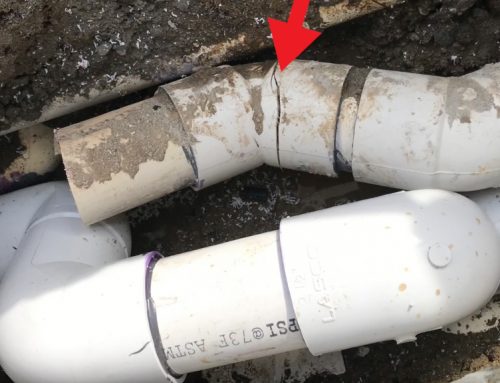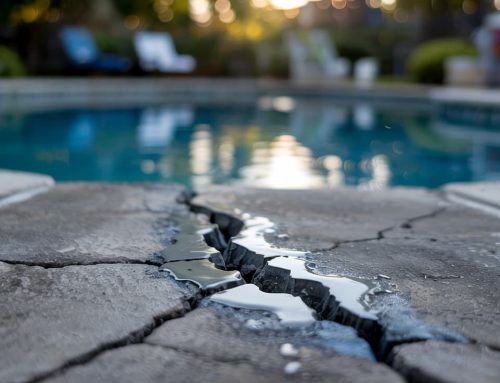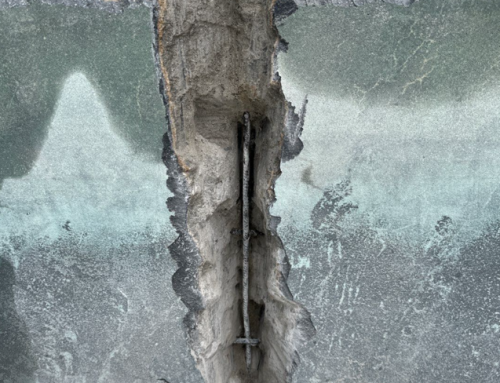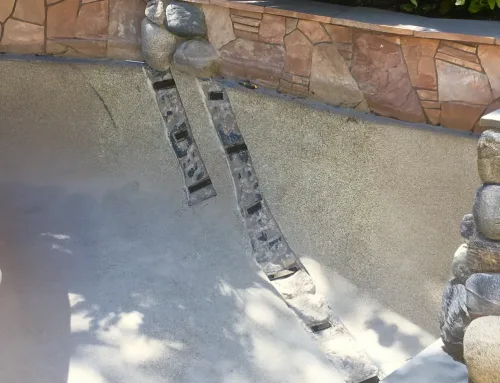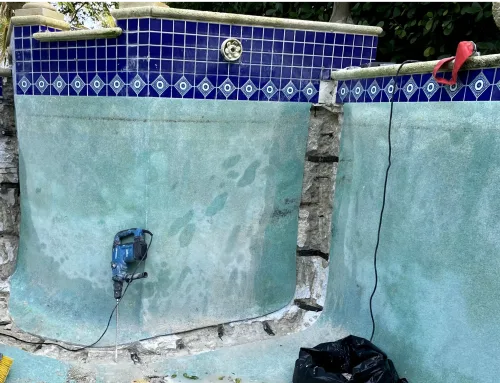Structural cracks in concrete are a serious issue for any property owner, contractor, or engineer. Until recently, many repair methods-like epoxy injection or rebar stitching-offered only temporary relief, often leading to recurring cracks and costly rework. But now, a growing number of structural engineers are specifying and recommending the Torque Lock™ Staple System for permanent crack repair. In this article, you’ll discover why Torque Lock is changing the game for concrete crack repair, how it works, and why it’s quickly becoming the go-to solution for professionals who demand lasting results. Whether you’re a contractor, engineer, or property owner, understanding this innovative approach can save you time, money, and headaches.
What Makes Structural Crack Repair So Challenging?
Concrete cracks are more than just cosmetic-they can signal deeper issues like foundation settlement, movement of the concrete, or even structural failure. Repairing cracks in concrete structures is tricky because the repair must restore both strength and integrity, not just seal the surface. Many cracks, especially in structural concrete, are subject to ongoing stresses and movement, making it essential to use a repair method that can withstand these forces over time.
Traditional repair methods, such as using epoxy resin or simple adhesives, often fail to address the root cause of the crack. They might seal the crack, but they don’t always prevent further crack growth or movement along the crack plane. This is why structural crack repair requires more than just filling the fissure-it needs a permanent solution that stabilizes the entire concrete structure.
Why Are Structural Engineers Turning to Torque Lock?
Structural engineers are known for their cautious approach-they rarely stand by a repair method unless it’s proven to work. Increasingly, these professionals are recommending and specifying the Torque Lock™ Staple System for concrete crack repair. The reason? Torque Lock delivers a permanent fix by applying up to 5000 lbs of controlled compression torque to either side of the crack, preventing further movement, spreading, or leakage.
Unlike traditional epoxy injection or rebar stitching, Torque Lock staples are made of solid steel and use a patented Cam Lock™ technique. This method has been tested and trusted worldwide, with engineers appreciating its ability to stabilize cracks in pools, foundations, slabs, and more. When structural integrity is non-negotiable, Torque Lock provides engineers with the confidence that the repair will last.
How Does the Torque Lock Staple Work for Crack Repair?
The Torque Lock Staple is a post-tension controlled compression device designed specifically for structural crack repair. Here’s how it works:
- Stitching Method: Staples are installed across the crack, every 12 inches along its length, using templates for precise placement.
- Controlled Compression: Each staple is torqued to a specific value (typically 22 lbs), creating up to 5000 lbs of compression that holds the crack faces together and prevents further movement.
- Epoxy Integration: After the staples are installed, a high-quality epoxy is used to seal the crack and bond the staple to the concrete. This combination of mechanical and chemical repair ensures both strength and watertightness.
This approach is not just a patch-it’s a structural repair that restores the original strength of the concrete and prevents future issues.
What Are the Steps for Installing Torque Lock Staples?
Installing Torque Lock staples is straightforward and can be done by any trained contractor or handy homeowner:
- Map and Mark the Crack: Identify the entire crack and use templates to mark staple locations.
- Cut and Prepare the Crack: Chip out the concrete along the marked lines to expose the crack face.
- Drill Holes for Staples: Drill holes on either side of the crack to accommodate the staple legs.
- Insert and Torque the Staples: Place the staples in position and use a torque wrench to apply the recommended compression.
- Epoxy Application: Apply epoxy resin to seal the crack and bond the staple.
- Finish the Surface: Patch over the repair with mortar or hydraulic cement and refinish as needed.
This method ensures the entire crack is stabilized, not just sealed.

How Does Torque Lock Compare to Epoxy Injection?
Epoxy injection is a popular method for repairing cracks in concrete, especially for sealing and bonding. It involves injecting low-viscosity epoxy resin into the crack using injection ports, which then cures to form a strong adhesive bond. While epoxy injection can restore some structural strength and is effective for hairline and dormant cracks, it may not prevent crack movement or address underlying structural issues.
Torque Lock, on the other hand, provides mechanical stabilization by applying compression across the crack. This prevents the crack from widening or shifting, making it a more permanent solution for structural cracks. In fact, many pools and slabs previously repaired with epoxy alone have required follow-up repairs using Torque Lock to achieve a lasting fix.
Can Torque Lock Be Used with Other Crack Repair Methods?
Yes, Torque Lock staples can be used in combination with other repair methods for optimal results. For example:
- Epoxy Injection: After installing Torque Lock staples, epoxy resin can be injected to seal the crack and bond the staple in place.
- Routing and Sealing: The crack can be routed and sealed with a flexible sealant after staple installation for added waterproofing.
- Hydraulic Cement or Mortar: Used to finish the surface and ensure a seamless appearance.
This hybrid approach leverages the strengths of each method, providing both structural and waterproofing benefits.
Where Can Torque Lock Be Applied?
Torque Lock staples are versatile and can be used on almost any solid cement-based surface, including:
- Swimming pools (gunite, shotcrete, poured block)
- Spas and fountains
- Basement walls and floors
- Concrete slabs and driveways
- Foundations and retaining walls
- Seawalls and masonry structures
Whether the crack is straight, runs along a corner, or crosses a radius, Torque Lock offers specialized staples-including 45° and 90° corner staples-to ensure a perfect fit and maximum compression.
What Role Does Leak Detection Play in Crack Repair?
Leak detection is a crucial first step in repairing cracks, especially in pools, spas, and water features. At Torque Lock, we recommend using industry-leading LeakTronics equipment for precise and accurate leak detection. LeakTronics technology pinpoints the exact location and extent of leaks, ensuring that all cracks are identified and properly repaired before any cosmetic work is done.
By combining accurate leak detection with Torque Lock’s permanent crack repair system, you can be confident that your concrete structure will remain watertight and structurally sound.
How to Find a Qualified Pro for Structural Crack Repair?
While Torque Lock staples are user-friendly and can be installed by handy homeowners, we always recommend working with trained professionals for best results. That’s why we offer the FindAPro database-a resource listing qualified contractors who have been trained in the proper use of Torque Lock products. These professionals understand the nuances of structural crack repair and can ensure your project is completed to the highest standards.
Why Choose Torque Lock for Your Concrete Crack Repair Needs?
Choosing Torque Lock means investing in a permanent solution for structural cracks. Here’s why more structural engineers, contractors, and property owners are making the switch:
- Permanent repair: Up to 5000 lbs of compression per staple stops cracks from spreading or leaking.
- Versatile application: Works on pools, slabs, foundations, walls, and more.
- Engineer-approved: Increasingly specified by structural engineers for critical repairs.
- Easy installation: Kits include everything needed for a 10-foot crack, including epoxy and templates.
- Industry-leading support: Access to FindAPro and expert advice from the Torque Lock team.

Key Takeaways
- Structural crack repair requires more than just sealing the surface; it demands permanent stabilization.
- Torque Lock staples apply up to 5000 lbs of controlled compression, preventing crack movement and recurrence.
- Structural engineers are now recommending Torque Lock for concrete crack repair due to its proven, permanent results.
- The system is easy to install and works with epoxy, mortar, and other repair products for a comprehensive fix.
- Accurate leak detection with LeakTronics equipment ensures all cracks are identified and repaired.
- Torque Lock can be used on pools, slabs, foundations, and virtually any concrete structure.
- FindAPro connects you with trained professionals for reliable, long-lasting repairs.
- Don’t settle for temporary fixes-choose Torque Lock for the only permanent solution to structural cracks in concrete.


